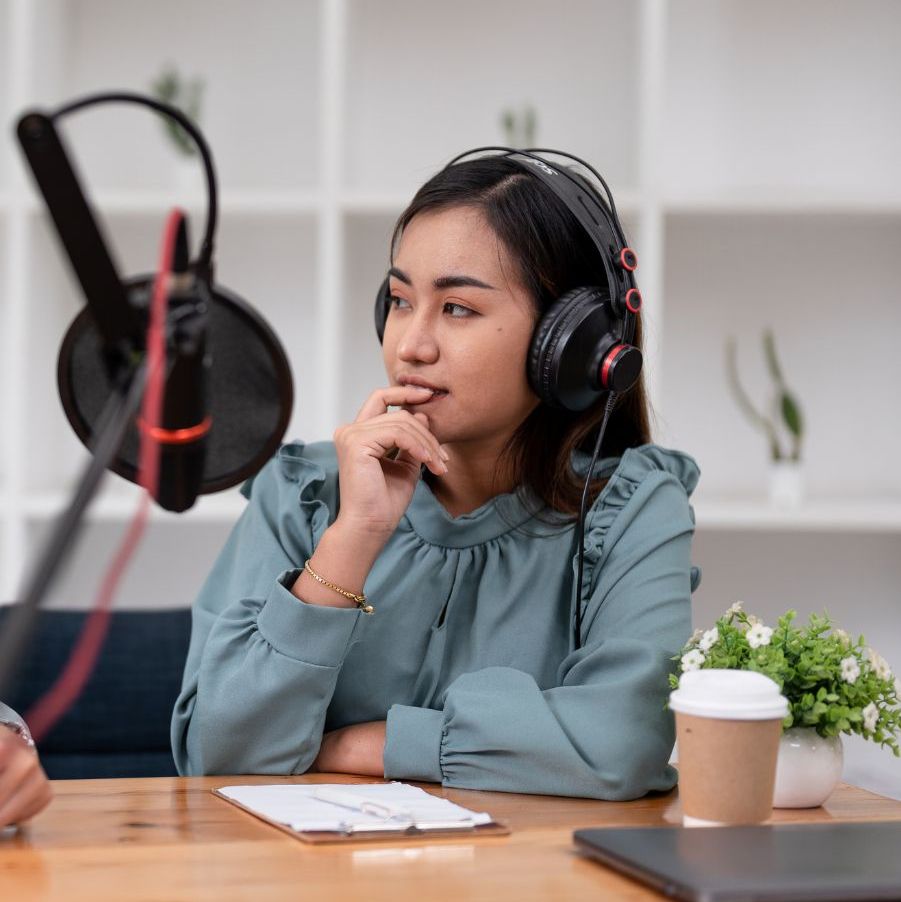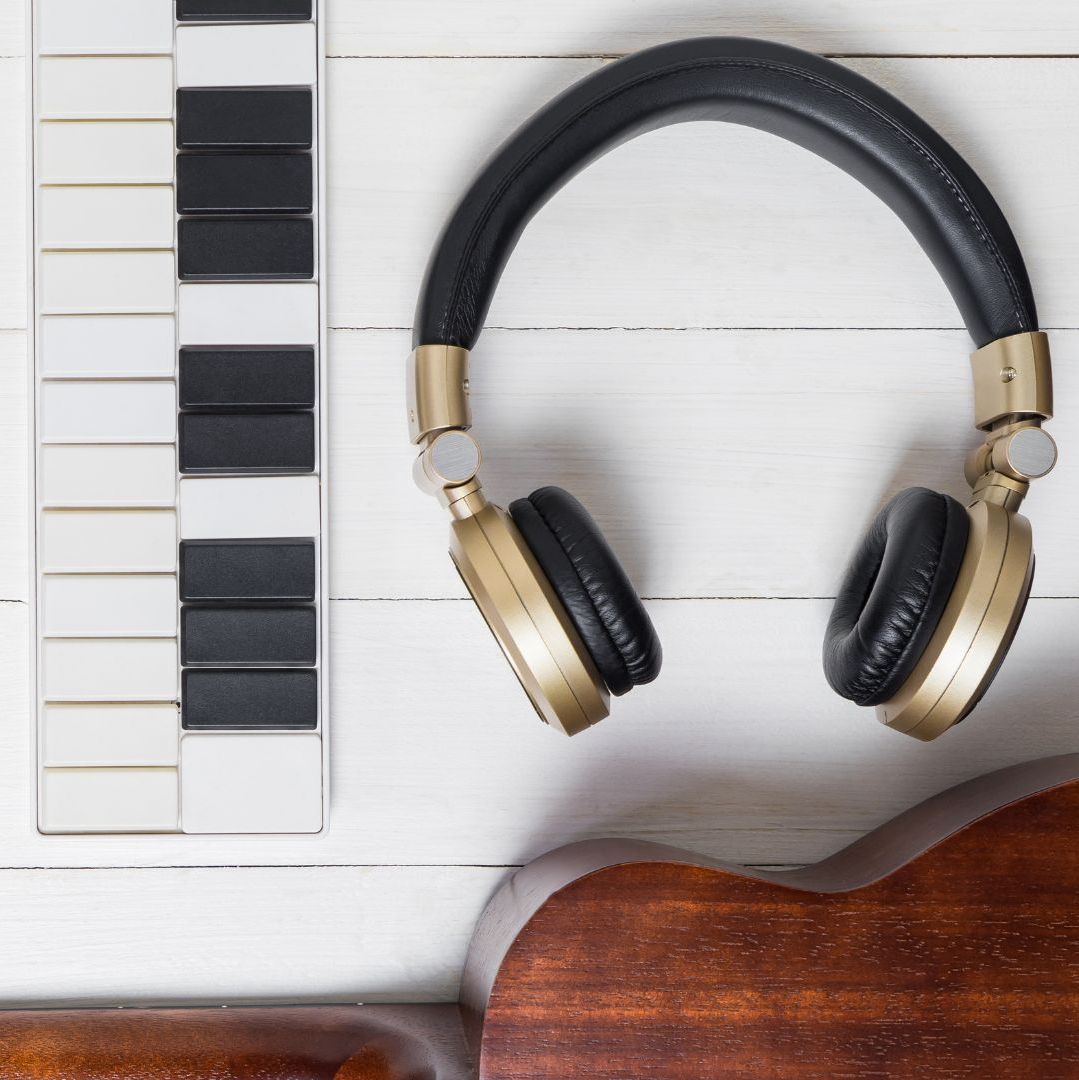What Editing Techniques Improve The Quality Of My Interview Recordings?
These FAQs address the most common questions that people may have when it comes to planning, preparing for, conducting, and analysing interviews for various purposes. These FAQs are applicable to a wide range of industries and situations, such as academic research, radio broadcasting, podcast or webinar hosting, journalism, job interviews, and many others. The information provided also delves into specific aspects of the interview process, including planning for individual or group/focus group interviews, important considerations during interviews, effective questioning techniques and building rapport with interviewees, different interview styles, and the steps to review and interpret the outcomes after the interview has taken place.
Mastering the Art of Interview Recordings: A Comprehensive Guide to Editing Techniques
In the dynamic landscape of modern communication, interview recordings serve as invaluable assets for researchers, journalists, podcasters, human resource managers, and professionals across various industries. These recordings capture the essence of conversations, preserving insights, and perspectives for future reference. However, the true power of interviews is unleashed through adept editing techniques that enhance the quality and impact of the recorded content.
Definition of Key Terms
- Interview Recordings: Audio or video recordings capturing conversations between individuals or focus groups.
- Editing Techniques: The strategic application of tools and methods to refine and optimise interview recordings for clarity, coherence, and overall quality.
Interview Editing Tips and Guide
The Importance of Quality Interview Recordings
Quality interview recordings lay the foundation for compelling content. They facilitate accurate transcriptions, content analysis, and effective communication of key messages. Investing time in improving the recording quality pays dividends during the editing phase.

Quality interview recordings serve as the bedrock upon which impactful content is built. Beyond capturing spoken words, they encapsulate the nuances, emotions, and insights that define a conversation. A meticulously recorded interview not only facilitates accurate transcriptions but also allows for in-depth content analysis, enabling researchers, journalists, and podcasters to extract meaningful narratives. The dividends of investing time in refining recording quality become apparent during the subsequent editing phase, where a clear, well-captured foundation paves the way for a polished and compelling final product.
Moreover, the significance of quality interview recordings extends beyond immediate use. They become valuable archival resources, preserving historical moments, expert insights, and unique perspectives. Whether it’s the recounting of a ground-breaking discovery, a personal reflection on a momentous event, or an expert analysis of industry trends, the clarity and fidelity of the recording are paramount. As technology evolves, these recordings become timeless assets that can be revisited and repurposed for various projects, ensuring that the effort put into their quality resonates long into the future.
Choosing the Right Equipment
Begin with the basics – selecting the right recording equipment. High-quality microphones, audio interfaces, and video cameras significantly impact the clarity and fidelity of your recordings. Brands like Zoom, Rode, and Shure offer reliable options for various budgets.
Selecting the appropriate recording equipment is the first crucial step in ensuring the quality of your interview recordings. High-quality microphones, audio interfaces, and video cameras are not mere accessories; they are the tools that will shape the sonic and visual landscape of your content. Brands such as Zoom, Rode, and Shure offer a spectrum of options catering to various budgets and requirements.
Consider the nature of your interviews when choosing equipment. For intimate one-on-one conversations, a directional microphone may be optimal to focus on the interviewee’s voice and minimise ambient noise. On the other hand, roundtable discussions or group interviews might benefit from multi-directional microphones or an audio interface that can accommodate multiple inputs. Investing in reliable equipment not only enhances the clarity of your recordings but also establishes a professional standard, fostering a positive impression on your audience. As technology advances, staying informed about the latest tools and upgrades ensures that your recording setup remains at the forefront of quality and innovation.
Creating a Controlled Environment
Background noise can be the nemesis of clear interview recordings. Choose a quiet location, use soundproofing if necessary, and consider directional microphones to focus on the interviewees’ voices while minimising ambient noise.
In the pursuit of pristine interview recordings, the environment in which the conversation unfolds plays a pivotal role. Background noise, akin to an uninvited guest, can mar the clarity of your recordings. To combat this, choose your recording location wisely. Opt for quiet spaces that provide a conducive backdrop for meaningful dialogue. If external noises persist, employ soundproofing techniques to create an acoustically controlled environment. This could involve using soundproof curtains, foam panels, or even selecting venues with minimal ambient noise.
Directional microphones are invaluable assets in the quest for clear interview recordings. By focusing on capturing sound from a specific direction, these microphones help isolate the voices of interviewees while minimising extraneous noise. This ensures that the core of the conversation remains the focal point, resulting in recordings that are not only audible but also free from distracting background interference. The choice of location and the implementation of soundproofing measures, coupled with directional microphones, form a triumvirate of strategies to create an environment where the richness of the interview can shine through without the interference of unwarranted noise.
Understanding Editing Software
Familiarise yourself with professional editing software such as Adobe Audition, Audacity, or GarageBand. These tools provide a range of features including noise reduction, equalisation, and compression, allowing you to polish your recordings to perfection.
Once the interviews are recorded, the next critical step is navigating the landscape of editing software. Familiarising yourself with professional tools such as Adobe Audition, Audacity, or GarageBand opens a gateway to a myriad of features designed to elevate the quality of your recordings. These tools are not just platforms for basic edits; they are virtual studios equipped with functionalities ranging from noise reduction and equalisation to compression, providing the means to sculpt your recordings to perfection.
Delving into the capabilities of these editing tools allows for nuanced enhancements. Noise reduction techniques, for instance, become indispensable in addressing the inevitable presence of background noise. By intelligently identifying and minimising unwanted sounds, these techniques contribute significantly to the overall clarity of your recordings. Equalisation emerges as a fine-tuning tool, allowing you to balance frequencies, refine tones, and ensure a harmonious blend of voices. Understanding the capabilities of your chosen software is akin to wielding a digital paintbrush; it empowers you to create a sonic masterpiece that captures the essence of the interview with precision and finesse.
Noise Reduction Techniques
Background noise is an inevitable companion in interview recordings. Employ noise reduction techniques to eliminate unwanted hisses, hums, or ambient sounds. This can significantly enhance the overall clarity of your recordings.
In the realm of interview recordings, battling background noise is a perpetual challenge. Unwanted hisses, hums, and ambient sounds can sneak into your recordings, detracting from the clarity of the conversation.

Implementing effective noise reduction techniques is akin to wielding a sonic scalpel, delicately carving away the extraneous sounds while preserving the essence of the dialogue. Advanced editing software, such as Adobe Audition or Audacity, often features noise reduction tools that analyse the audio spectrum and selectively diminish undesirable elements.
Moreover, understanding the nature of the background noise is crucial. Different environments introduce distinct auditory challenges – whether it’s the low hum of air conditioning in a closed room or the bustling street sounds in an urban setting. Tailoring your noise reduction approach to the specific characteristics of the unwanted sound ensures a more precise and effective outcome. Additionally, striking a balance is key; overly aggressive noise reduction can result in unnatural, artifact-laden audio. Therefore, a nuanced application of these techniques is essential, providing a clean canvas for the subsequent layers of editing.
Mastering Equalisation for Clarity
Equalisation (EQ) is a powerful tool to balance frequencies in your recordings. Adjusting bass, midrange, and treble frequencies can improve the clarity of voices and ensure a balanced sound output.
Equalisation, commonly known as EQ, is a formidable ally in the quest for sonic clarity. Frequencies, akin to the colours on a palette, contribute to the overall tonal landscape of your recordings. Mastering equalisation involves a deliberate manipulation of these frequencies, striking a harmonious balance to enhance the clarity of voices and ensure a well-rounded, pleasant listening experience. The bass, midrange, and treble frequencies each play a distinct role, and understanding how to navigate this auditory spectrum empowers editors to shape the sonic character of their recordings.
For interview recordings, the emphasis often lies on the midrange frequencies where human speech predominantly resides. By fine-tuning this range, you can accentuate the nuances of voices, making them more distinct and intelligible. Adjusting bass frequencies can add warmth and depth, while fine-tuning treble frequencies can bring out crispness and clarity. It’s a delicate dance that requires both technical know-how and an artistic ear. Furthermore, some editing software allows for the creation of custom pre-sets, enabling consistency across multiple recordings or maintaining a specific sonic signature for a podcast series. Mastering equalisation is not merely a technical step; it’s a creative endeavour that transforms raw audio into a polished, professional product.
Seamless Editing for Flow
Achieving a seamless flow in your interview recordings involves precise editing. Remove unnecessary pauses, stammers, or repetitions to enhance the coherence of the conversation. Ensure the final edit feels natural and engaging.
Editing is the fine art of sculpting raw dialogue into a coherent, engaging narrative. Achieving a seamless flow in interview recordings demands a surgical approach to the editing process. Unnecessary pauses, stammers, or repetitions can disrupt the natural rhythm of conversation, hindering the listener’s experience. The objective is not just to eliminate these interruptions but to do so in a way that preserves the authenticity of the interaction. Careful consideration must be given to the pacing and cadence of the conversation to ensure that the final edit feels natural and unforced.
One aspect of achieving seamless flow is the strategic use of cuts. Removing superfluous elements requires a keen understanding of the conversation’s dynamics. Pauses, for instance, can be trimmed for a more dynamic exchange, but it’s crucial to maintain the conversational ebb and flow. Editing should be invisible, with transitions so smooth that the audience remains immersed in the content. Moreover, retaining the genuine nature of the conversation is vital. While edits aim to enhance coherence, they should never compromise the authenticity or sincerity of the interview. Precision is paramount in creating a final product that not only respects the integrity of the conversation but also captivates the audience with its seamless, natural flow.
Adding Relevant Music or Effects
Strategic use of background music or effects can elevate the mood and engagement of your interview recordings. However, exercise caution to avoid overpowering the voices or distracting from the main content.
The addition of background music or effects to interview recordings is a double-edged sword. When wielded judiciously, these elements can elevate the mood, enhance engagement, and create a memorable listening experience.

However, a heavy-handed approach risks overshadowing the voices of the interviewees or distracting from the main content. Strategic integration is key. Consider the tone and atmosphere you want to convey and select music or effects that complement, rather than compete with, the conversation.
Background music should be subtle, acting as a supportive undercurrent rather than a dominating force. Its purpose is to enhance the emotional resonance of the dialogue without overshadowing the primary content. When choosing music, pay attention to tempo, genre, and overall ambiance to ensure it aligns with the interview’s theme and mood. Effects, such as ambient sounds or subtle transitions, can also add a layer of richness but should be applied sparingly. Their role is to enhance, not distract. It’s advisable to test the impact of music and effects by previewing the edited recording with fresh ears, ensuring they contribute positively to the overall listening experience. Striking the right balance between enhancement and subtlety will result in interview recordings that not only inform but also captivate and resonate with the audience.
Transitions and Segmentation
Divide your interview into segments or chapters, making it easier for your audience to navigate. Smooth transitions between topics enhance the overall listening or viewing experience.
Dividing an interview into well-crafted segments or chapters is akin to creating a roadmap for your audience, guiding them through the narrative with clarity and purpose. This strategic approach to organisation not only makes it easier for the audience to navigate but also enhances the overall listening or viewing experience. Each segment can be thought of as a distinct chapter, encapsulating a specific theme or topic within the interview. This segmentation serves as a natural pause for the audience, allowing them to digest information and anticipate the next aspect of the conversation.
Smooth transitions between these segments are paramount. Consider the narrative flow as a seamless thread connecting various topics. Introduce transitions that act as bridges, maintaining a sense of continuity while signalling a shift in focus. This can be achieved through brief musical interludes, subtle sound effects, or even a well-placed summary statement that serves as a segue. Moreover, the selection of where to place these segments is an art in itself. Understanding the ebb and flow of the conversation allows for intuitive segmentation, ensuring that each part serves a purpose and contributes meaningfully to the overall narrative. By providing these natural breaks and crafting fluid transitions, you not only enhance the structural integrity of your interview but also keep your audience captivated throughout the journey.
Quality Control Checks
Before finalising your edited interview, conduct thorough quality control checks. Listen or watch the recording in its entirety to catch any overlooked issues. Ensure that all edits contribute positively to the overall quality.
Before releasing your edited interview into the public sphere, a rigorous regimen of quality control checks is a non-negotiable step. Listening or watching the recording in its entirety may seem like an obvious task, but the depth of this process goes beyond a cursory review. It’s a meticulous examination that demands concentration and attention to detail. Begin by assessing the overall flow – does the conversation maintain a natural rhythm, or are there abrupt transitions that disrupt the coherence? Ensure that the pacing aligns with the intended tone, and there are no lingering awkward silences or rushed exchanges.
Simultaneously, scrutinise the audio quality with a discerning ear. Are there any remnants of background noise that slipped through the noise reduction techniques? Is the equalisation balanced, allowing each voice to shine without distortion? Paying attention to these nuances is critical. Additionally, verify the accuracy of any edits made. While seamless editing is the goal, it’s crucial to confirm that no essential content was inadvertently excised or altered.
Beyond the auditory realm, if your interview includes visuals, thoroughly inspect the video quality. Check for consistency in lighting, framing, and any added effects. A final layer of quality control involves soliciting feedback from a fresh pair of ears and eyes. A second opinion can provide valuable insights and catch issues that might have escaped your notice. In the realm of interview recordings, meticulous quality control ensures that your audience receives a polished, professional product that reflects the dedication invested in its creation.
Key Tips and Resources for Editing Interview Recordings
Examples of Interview Editing
- Podcast Excellence: The podcast “How I Built This” by NPR demonstrates impeccable interview editing, seamlessly blending insightful conversations with engaging storytelling.
- Documentary Brilliance: The documentary series “Making a Murderer” on Netflix utilises meticulous editing to present a compelling narrative through interview recordings and visual storytelling.
Key Tips For Great Editing
- Prioritise Audio Quality: Crystal-clear audio is the backbone of impactful interview recordings. Invest in high-quality microphones and acoustically treated spaces.
- Strategic Editing: Editing is not just about cutting and pasting; it’s about creating a narrative. Be strategic in your edits to enhance the overall storytelling experience.
In the realm of interview recordings, the journey doesn’t end with capturing the conversation. Skillful editing is the linchpin that transforms raw recordings into compelling narratives. Whether you’re a seasoned journalist, a budding podcaster, or a human resource professional, mastering the art of interview editing will undoubtedly amplify the impact of your content.
Key Piece of Advice: Embrace the Editing Process Embrace editing as a creative process rather than a technical necessity. It’s the refining stage where your interview recordings evolve from good to exceptional.
Useful Resources
Audacity – Free, Open Source, Cross-Platform Audio Software. Audacity is a powerful and user-friendly audio editing software suitable for beginners and professionals alike.
Adobe Audition – Audio Recording and Editing Software. Adobe Audition is professional audio editing software with advanced features for in-depth editing and post-production.
Way With Words – Professional Transcription Services. Way with Words is an excellent resource for obtaining accurate and professional transcriptions of your interviews, ensuring clarity and precision in your content.
